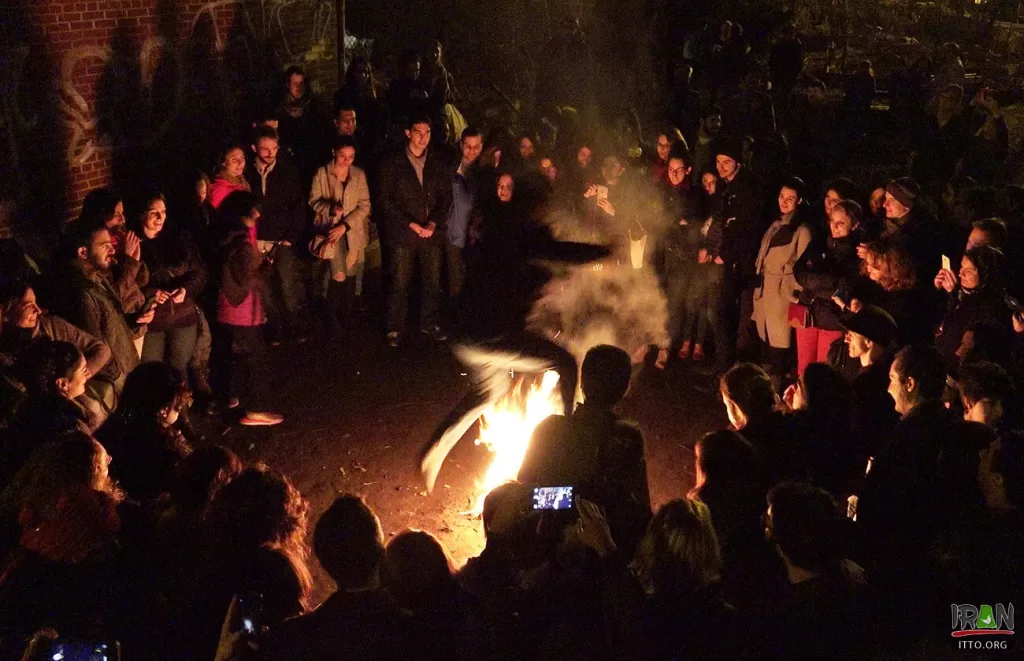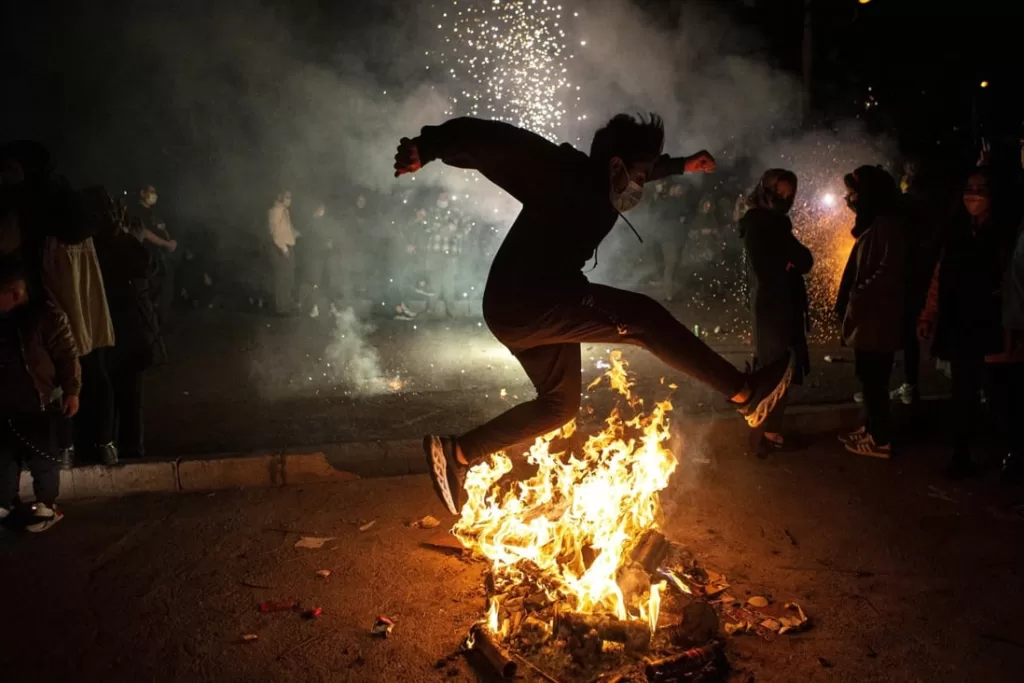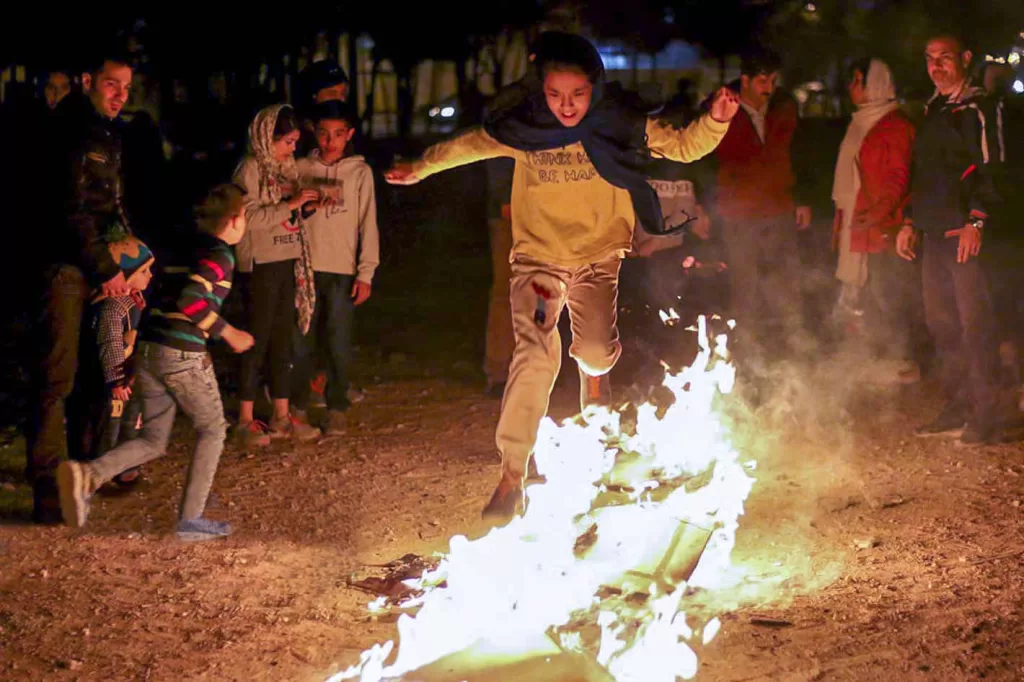Discovering Chaharshanbe Suri: A Journey Through Persia’s Most Vibrant Festival
Chaharshanbe Suri is one of the most ancient and colorful festivals in Iran, dating back to over 2500 years ago. It is celebrated on the eve of the last Wednesday of the year, before the spring equinox and the start of Nowruz, the Iranian New Year. Chaharshanbe Suri literally means “Red Wednesday” or “Wednesday Celebration” in Persian, and it is a festive celebration of fire and cleansing. In this blog post from Rad Travel, we will explore what Chaharshanbe Suri is, how it is celebrated, and what it means for Iranians and other cultures around the world.
What is Chaharshanbe Suri?
Chaharshanbe Suri has its roots in Zoroastrianism, the ancient religion of Iran that worships fire as a symbol of purity and wisdom. The festival is believed to have originated during the Achaemenid era, when Iran was a powerful empire that ruled over many lands and peoples. The festival was a way of honoring Ahura Mazda, the supreme god of Zoroastrianism, and celebrating his victory over Ahriman, the evil spirit of darkness and chaos. The festival was also a way of expressing gratitude for the blessings of the past year and praying for a prosperous and happy new year.
5 Really Interesting Facts about chaharshanbe souri
- Chaharshanbe Suri is also known as the Festival of Fire.
- The tradition of fire-jumping during Chaharshanbe Suri dates back to ancient Persia when it was believed to ward off evil spirits.
- The festival is traditionally celebrated on the last Tuesday night before the Persian New Year, or Nowruz.
- In addition to fire-jumping, other festivities during Chaharshanbe Suri include making noise (Ghashogh-Zani) and feasting on traditional foods.
- Chaharshanbe Suri is not only celebrated in Iran but also in other countries such as Azerbaijan, Afghanistan, Tajikistan, and Uzbekistan, each with their own unique regional variations.

The history and origins of Chaharshanbe Suri
The word Chaharshanbe Suri means Wednesday celebration and is named after the day it is celebrated. In ancient times, Iranians believed that evil spirits roamed freely during the transition period between the old and new year. They lit bonfires to frighten away the evil forces and threw seeds into the flames, hoping for prosperity and good luck. Over time, the tradition evolved to include fire-jumping, where participants jump over the bonfires while singing and dancing.
How Chaharshanbe Suri is celebrated in modern times
Chaharshanbe Suri is still widely celebrated in Iran and other countries with Iranian influence, such as Afghanistan, Azerbaijan, Tajikistan, and Kurdistan. The main ritual of Chaharshanbe Suri is lighting bonfires and jumping over them while singing a traditional song that goes like this:
“Sorkhi-ye to az man
Zardi-ye man az to”
This means “Your redness is mine, my paleness is yours” and it implies that by jumping over the fire, one can exchange one’s sorrows and problems with the fire’s warmth and energy. This is considered a purification practice that cleanses one’s body and soul from all the negativity and prepares one for a fresh start.
Another ritual of Chaharshanbe Suri is spoon-banging or qashogh-zani, which is similar to trick-or-treating. People wear disguises and go door-to-door with spoons and bowls, banging them loudly and asking for snacks or treats from their neighbors. This is a fun way of spreading joy and sharing food among the community.
A third ritual of Chaharshanbe Suri is smashing pots or koozeh-shekanee, which is a superstitious way of transferring one’s bad luck to a pot and breaking it. People put coins or other objects inside new pots and drop them from high places, such as rooftops or balconies. The louder the sound of the breaking pot, the better.
The Significance of Fire-Jumping
Symbolism and meaning behind the tradition of fire-jumping
Fire-jumping is the most iconic aspect of Chaharshanbe Suri, and it holds deep symbolism and meaning. Jumping over the flames is believed to cleanse the body and soul from impurities and bring good luck and fortune for the new year. The act of jumping over the fire is also a symbol of courage and bravery, as participants face their fears and overcome them.
Religious and cultural significance of fire-jumping in Iran and Central Asia
Fire represents purity, warmth, and light in Iranian culture, and fire-jumping is a way to honour these elements. Fire is also considered sacred in Zoroastrianism, one of the oldest religions in Iran. Central Asian countries like Azerbaijan, Uzbekistan, and Turkmenistan also celebrate Chaharshanbe Suri, where it is known as Tuesday Celebration, and the tradition of fire-jumping is an integral part of their cultures.
Traditional Foods and Festivities
Overview of traditional foods and their significance during Chaharshanbe Suri
Food plays a significant role in Iranian culture, and Chaharshanbe Suri is no exception. One of the most popular foods eaten during the festival is Ash-e Reshteh, a hearty soup made with beans, lentils, herbs, and noodles. Another traditional dish is Kuku Sabzi, a herb omelette made with eggs and a variety of fresh herbs. Iranians also enjoy sweets like Gaz, a nougat made with honey and pistachios.
Other festivities and rituals associated with Chaharshanbe Suri celebrations
Apart from fire-jumping and feasting on delicious foods, other festivities and rituals take place during Chaharshanbe Suri. Young people dress up in costumes and go door-to-door, banging spoons on pots and pans while singing and asking for treats. This tradition is known as Ghashogh-Zani, which means making noise. In some parts of Iran, people also set off fireworks and launch lanterns into the night sky.

Safety Concerns and Precautions
Tips for staying safe while participating in Chaharshanbe Suri festivities
While Chaharshanbe Suri is a fun-filled festival, it is also important to take safety precautions. Participants should wear clothing made of natural fibres, avoid wearing synthetic materials that can catch fire easily, and keep a safe distance from the flames. Children should always be supervised during the festivities, and individuals with respiratory problems should avoid the smoke.
Common injuries and accidents to be aware of during Chaharshanbe Suri celebrations
Injuries are not uncommon during Chaharshanbe Suri, and participants should be cautious while jumping over the flames. Burns, cuts, and eye injuries are some of the most common injuries reported during the festival. It is advisable to seek medical attention if an injury occurs.
Chaharshanbe Suri Around the World
Regional variations and adaptations of Chaharshanbe Suri celebrations
Although Chaharshanbe Suri originated in ancient Persia, it has evolved over time and adapted to different regional variations. In Azerbaijan, the festival is called “Yeddi Şuşe” (seven dishes) and involves preparing seven types of food that represent various elements of nature. In Afghanistan, the festival is known as Kha Shodal and is celebrated by lighting bonfires and distributing sweets to children. In Tajikistan, the festival is called “Festival of Fire” and involves lighting candles and reciting verses from the Quran.
Chaharshanbe Suri’s influence on other cultures and festivals
Chaharshanbe Suri has also influenced other cultures and festivals around the world. In India, a similar festival called Holi is celebrated, which involves lighting bonfires and throwing coloured powders at each other. In Mexico, the Day of the Dead festival includes lighting candles and placing them on altars to honour deceased loved ones. The tradition of fire-jumping has also been adopted by some communities in Greece and Bulgaria during Easter.

Conclusion: Chaharshanbe Suri and Iranian Culture
Reflections on the significance of Chaharshanbe Suri within Iranian culture
Chaharshanbe Suri is an important festival in Iranian culture that celebrates the renewal of life and the triumph of good over evil. It is a time for people to come together with their families and friends to celebrate and honour their traditions. The festival is deeply rooted in Iranian history, and its enduring appeal speaks to the resilience and vitality of Iranian culture.
Final thoughts on the enduring appeal of Chaharshanbe Suri celebrations
For those who travel to Iran during Chaharshanbe Suri, it is an incredible opportunity to witness the vibrant atmosphere and participate in the festivities alongside locals. Radtravel Agency offers tours during this exciting time of year, allowing travelers to experience the unique cultural traditions of Iran firsthand. By participating in the festivities, visitors can gain a deeper appreciation for the traditions and customs that have been passed down through generations. Chaharshanbe Suri is a celebration of life, renewal, and community, and its enduring appeal will continue to captivate participants for generations to come.
FAQs about Chaharshanbe Suri
- What is Chaharshanbe Suri?
Chaharshanbe Suri is a traditional Iranian festival celebrated on the last Tuesday night before the Persian New Year. It involves lighting bonfires and jumping over flames while singing and dancing. - What is the significance of fire-jumping in Chaharshanbe Suri?
Fire-jumping is believed to cleanse the body and soul from impurities and bring good luck and fortune for the new year. It is also a symbol of courage and bravery. - What are some traditional foods eaten during Chaharshanbe Suri?
Some traditional foods eaten during Chaharshanbe Suri include Ash-e Reshteh, Kuku Sabzi, and Gaz. - What other festivities take place during Chaharshanbe Suri?
In addition to fire-jumping and feasting on traditional foods, other festivities during Chaharshanbe Suri include Ghashogh-Zani (making noise) and setting off fireworks and lanterns. - How do I stay safe during Chaharshanbe Suri celebrations?
To stay safe during Chaharshanbe Suri, wear clothing made of natural fibres, keep a safe distance from the flames, and supervise children at all times. - Where is Chaharshanbe Suri celebrated?
Chaharshanbe Suri is celebrated throughout Iran and among Iranian communities around the world. - What are some regional variations of Chaharshanbe Suri celebrations?
Regional variations of Chaharshanbe Suri celebrations can be found in Azerbaijan, Afghanistan, Tajikistan, and Uzbekistan. - How has Chaharshanbe Suri influenced other cultures and festivals?
Chaharshanbe Suri has influenced other cultures and festivals around the world, including Holi in India and the Day of the Dead in Mexico. - What is the role of poetry in Chaharshanbe Suri celebrations?
Poetry plays an important role in Chaharshanbe Suri celebrations, with traditional verses recited during fire-jumping. - Why is Chaharshanbe Suri significant in Iranian culture?
Chaharshanbe Suri is significant in Iranian culture as a celebration of life, renewal, and community, with deep roots in Iranian history.

